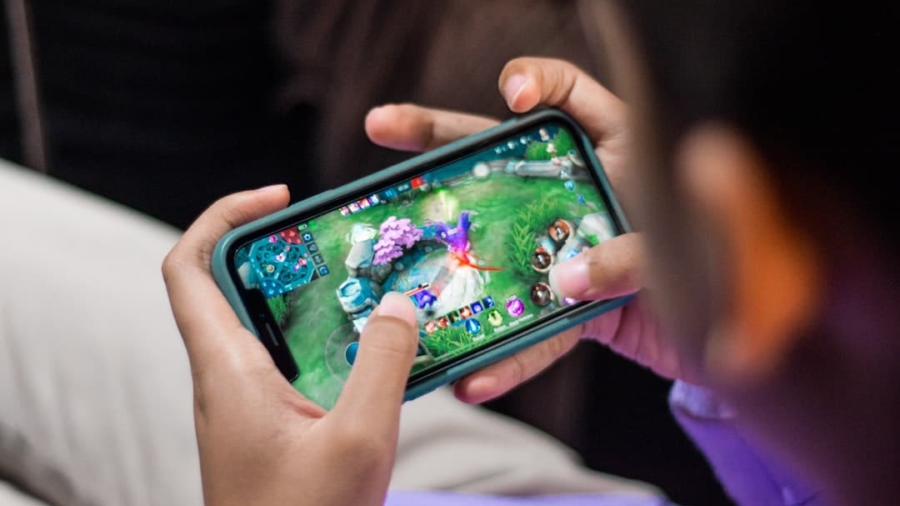Interactive fiction (IF) has its roots in the early days of computer gaming, where text-based adventures allowed players to immerse themselves in narrative-driven experiences. The genre gained traction in the late 1970s and early 1980s with titles like “Zork” and “Adventure,” which invited players to explore richly crafted worlds through text commands. These early games laid the groundwork for a new form of storytelling, one that blurred the lines between reader and participant.
As technology advanced, so too did the complexity and depth of interactive narratives, leading to a renaissance of the genre in the digital age. The rise of the internet in the 1990s further propelled interactive fiction into the mainstream. Online communities began to form around IF, with authors sharing their works and players engaging in collaborative storytelling.
This era saw the emergence of tools like Inform and TADS, which democratized the creation of interactive narratives, allowing aspiring writers to craft their own stories without needing extensive programming knowledge. As a result, a diverse array of voices and styles emerged, enriching the landscape of interactive fiction and attracting a dedicated following.
Key Takeaways
- Interactive fiction has seen a rise in popularity due to its immersive and engaging storytelling experience.
- The evolution of interactive fiction on mobile has made it more accessible and convenient for users to enjoy on the go.
- Popular interactive fiction games on mobile include “Lifeline,” “80 Days,” and “Choice of Games” series.
- The appeal of interactive fiction on mobile lies in its ability to provide a personalized and interactive narrative experience.
- Technology is enhancing interactive fiction on mobile through features like augmented reality, voice recognition, and interactive decision-making.
The Evolution of Interactive Fiction on Mobile
With the advent of smartphones and tablets, interactive fiction found a new platform that transformed how stories could be told and experienced. The mobile revolution brought about a shift in user behavior; people began to seek out bite-sized entertainment that could be consumed on-the-go. This shift created fertile ground for interactive fiction to flourish, as mobile devices offered unique opportunities for storytelling that were not possible on traditional platforms.
Developers began to experiment with touch interfaces, allowing players to make choices through simple taps and swipes, making the experience more intuitive and engaging. The evolution of mobile technology also enabled richer multimedia experiences within interactive fiction. Developers began incorporating sound effects, music, and visuals to enhance the narrative experience.
Games like “80 Days” and “Lifeline” exemplify this trend, using graphics and audio to create immersive worlds that draw players deeper into their stories. The ability to integrate multimedia elements not only enriched the storytelling but also attracted a broader audience, including those who may not have previously engaged with traditional text-based games.
Popular Interactive Fiction Games on Mobile

Several titles have emerged as standout examples of interactive fiction on mobile platforms, each offering unique narratives and gameplay mechanics. “Choices: Stories You Play” is one such game that has gained immense popularity, allowing players to navigate through a variety of genres, from romance to fantasy. The game’s structure encourages players to make decisions that influence the direction of the story, creating a personalized experience that resonates with users.
Its success can be attributed to its engaging writing, diverse character options, and the emotional weight of player choices. Another notable title is “Episode,” which has carved out a niche in the realm of interactive storytelling aimed at younger audiences. With its focus on romance and drama, “Episode” allows players to create their own characters and influence plotlines through choices that affect relationships and outcomes.
This blend of storytelling and social interaction has made “Episode” a cultural phenomenon among its target demographic.
The Appeal of Interactive Fiction on Mobile
The appeal of interactive fiction on mobile devices lies in its ability to offer personalized storytelling experiences that resonate with individual players. Unlike traditional narratives where readers passively consume content, interactive fiction invites users to actively participate in shaping the story. This agency fosters a deeper emotional connection to the narrative, as players become invested in the outcomes of their choices.
The immediacy of mobile devices also enhances this experience; players can engage with stories during brief moments throughout their day, making it an accessible form of entertainment. Moreover, interactive fiction often explores themes and narratives that resonate with contemporary audiences.
This exploration can lead to meaningful reflections on personal experiences and societal norms, making interactive fiction not just a form of entertainment but also a medium for introspection and discussion.
How Technology is Enhancing Interactive Fiction on Mobile
Advancements in technology continue to shape the landscape of interactive fiction on mobile platforms. One significant development is the integration of artificial intelligence (AI) into narrative design. AI can analyze player choices and adapt storylines in real-time, creating dynamic narratives that respond to individual preferences.
This level of personalization enhances player engagement by ensuring that no two experiences are exactly alike. Games like “AI Dungeon” exemplify this trend by using AI-generated content to create limitless storytelling possibilities based on player input. Additionally, augmented reality (AR) is beginning to play a role in enhancing interactive fiction experiences on mobile devices.
By overlaying digital elements onto the real world, AR can create immersive environments that blend storytelling with physical exploration. For instance, games like “Pokémon GO” have demonstrated how AR can engage players in unique ways, encouraging them to interact with their surroundings while pursuing narrative-driven objectives. As AR technology continues to evolve, it holds the potential to revolutionize how stories are told within interactive fiction.
The Role of Storytelling in Interactive Fiction on Mobile

At its core, interactive fiction is fundamentally about storytelling. The narratives crafted within these games are often intricate and multifaceted, requiring writers to balance player agency with coherent plot development. Effective storytelling in interactive fiction involves creating compelling characters whose motivations resonate with players while also designing branching narratives that allow for meaningful choices.
This delicate balance is crucial; if players feel their choices are inconsequential or if the story becomes disjointed due to branching paths, engagement can quickly wane. Moreover, storytelling in interactive fiction often employs techniques borrowed from traditional literature while adapting them for an interactive format. Foreshadowing, character development, and thematic exploration are all essential components that enhance the narrative experience.
Writers must consider how player choices impact character arcs and plot progression while ensuring that each path remains engaging and satisfying. This complexity adds depth to the storytelling process, making it an art form that requires both creativity and technical skill.
The Future of Interactive Fiction on Mobile
As technology continues to advance at a rapid pace, the future of interactive fiction on mobile devices appears promising. One potential direction is the increased use of virtual reality (VR) technology, which could offer even more immersive storytelling experiences. Imagine stepping into a fully realized world where players can interact with characters and environments in ways that traditional mobile games cannot replicate.
VR could elevate the emotional stakes of narratives by placing players directly within the story’s context. Furthermore, as social media platforms evolve, they may provide new avenues for sharing and experiencing interactive fiction. Collaborative storytelling could become more prevalent as players engage with friends or communities to create shared narratives.
This shift could lead to innovative formats where stories are told across multiple platforms or mediums, blurring the lines between gaming, literature, and social interaction. The potential for cross-platform storytelling could redefine how audiences engage with narratives in an increasingly interconnected world.
Tips for Creating and Enjoying Interactive Fiction on Mobile
For those interested in creating their own interactive fiction on mobile platforms, several key tips can enhance both the writing process and player experience. First and foremost, focus on character development; well-rounded characters with relatable motivations will draw players into your narrative. Consider how their choices will impact their arcs and ensure that each decision feels meaningful within the context of the story.
Additionally, embrace feedback from playtesters early in the development process. Understanding how players interact with your narrative can provide invaluable insights into what works and what doesn’t. Iteration is key; be prepared to refine your story based on player experiences to create a more engaging final product.
For players looking to enjoy interactive fiction on mobile devices, approach each game with an open mind and a willingness to explore different genres and styles. Engage deeply with the narrative by considering your choices carefully; think about how they align with your values or challenge your perspectives. Sharing your experiences with others can also enrich your understanding of the story and foster discussions about its themes.
In conclusion, interactive fiction on mobile devices represents a dynamic intersection of technology and storytelling that continues to evolve rapidly. As developers push boundaries and explore new possibilities within this genre, both creators and players stand at the forefront of an exciting narrative landscape filled with potential for innovation and engagement.
If you’re interested in exploring the world of interactive fiction on a different platform, you may want to check out this article on the

